-
 Bitcoin
Bitcoin $114800
-3.31% -
 Ethereum
Ethereum $3641
-5.84% -
 XRP
XRP $2.948
-6.36% -
 Tether USDt
Tether USDt $0.9998
-0.03% -
 BNB
BNB $772.4
-3.97% -
 Solana
Solana $169.1
-6.68% -
 USDC
USDC $0.9999
-0.01% -
 Dogecoin
Dogecoin $0.2056
-8.09% -
 TRON
TRON $0.3247
-0.18% -
 Cardano
Cardano $0.7239
-7.43% -
 Hyperliquid
Hyperliquid $39.71
-8.60% -
 Stellar
Stellar $0.3912
-7.84% -
 Sui
Sui $3.510
-10.17% -
 Chainlink
Chainlink $16.59
-8.03% -
 Bitcoin Cash
Bitcoin Cash $560.5
-3.65% -
 Hedera
Hedera $0.2464
-10.08% -
 Avalanche
Avalanche $22.03
-7.87% -
 Ethena USDe
Ethena USDe $1.001
-0.02% -
 UNUS SED LEO
UNUS SED LEO $8.947
0.21% -
 Toncoin
Toncoin $3.389
-2.58% -
 Litecoin
Litecoin $104.9
-5.23% -
 Shiba Inu
Shiba Inu $0.00001220
-6.67% -
 Polkadot
Polkadot $3.652
-6.10% -
 Uniswap
Uniswap $9.213
-9.05% -
 Monero
Monero $307.2
-2.93% -
 Dai
Dai $0.9998
-0.02% -
 Bitget Token
Bitget Token $4.367
-2.89% -
 Cronos
Cronos $0.1374
-6.80% -
 Pepe
Pepe $0.00001056
-8.65% -
 Aave
Aave $257.3
-7.31%
How do you use the VWAP indicator in crypto trading?
VWAP combines price and volume to identify fair value and trend direction in crypto, helping traders time entries with better accuracy.
Jul 31, 2025 at 01:44 am
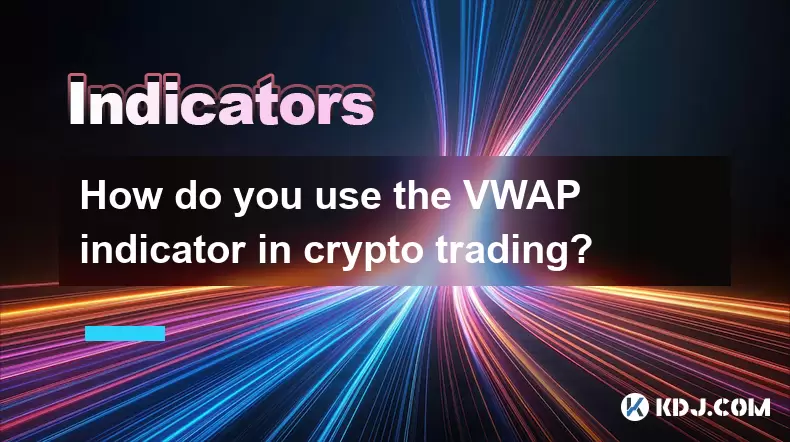
Understanding the VWAP Indicator in Cryptocurrency Markets
The Volume Weighted Average Price (VWAP) is a powerful analytical tool used extensively in crypto trading to assess the average price of a cryptocurrency over a specific time period, weighted by trading volume. Unlike a simple moving average, which only considers price, VWAP incorporates both price and volume, offering a more accurate reflection of market sentiment. This makes it especially useful in the highly volatile cryptocurrency markets, where volume spikes can signal significant shifts in direction. Traders use VWAP to identify fair value for an asset during the trading session, helping them determine whether the current price is relatively high or low based on volume activity.
How VWAP is Calculated in Crypto Trading
The VWAP calculation involves summing the dollar volume (price multiplied by volume) for each time interval and dividing it by the total volume over the same period. The formula is:
VWAP = Σ (Price × Volume) / Σ Volume
This calculation is cumulative, meaning it resets at the beginning of each trading session. Most crypto trading platforms, such as TradingView, Binance, or Bybit, automatically compute and display the VWAP line on price charts. To manually interpret it, traders can break down each candlestick into its components:
- Identify the typical price for each candle: (High + Low + Close) / 3
- Multiply the typical price by the volume of that candle
- Accumulate the total dollar volume and total volume across all candles
- Divide the cumulative dollar volume by the cumulative volume to get VWAP
Platforms perform this in real time, but understanding the mechanics helps traders appreciate how volume surges influence the VWAP line.
Using VWAP as a Trend Confirmation Tool
One of the primary uses of VWAP in crypto trading is to confirm the direction of the trend. When the price of a cryptocurrency trades above the VWAP line, it generally indicates bullish momentum, suggesting that buyers are in control and the asset is trading at a premium relative to its volume-weighted average. Conversely, when the price trades below the VWAP, it signals bearish sentiment, with sellers dominating.
Traders often combine VWAP with other indicators such as moving averages or RSI to strengthen their analysis. For instance:
- A breakout above VWAP accompanied by rising volume may confirm a new uptrend
- A failure to sustain price above VWAP after a rally could suggest weak demand
- Consistent price action below VWAP with increasing volume may indicate ongoing distribution
These observations are particularly useful in intraday trading, where short-term momentum plays a critical role.
Executing Trades Using VWAP in Crypto Markets
Many traders use VWAP as a dynamic support and resistance level. When the price pulls back to the VWAP during an uptrend and bounces, it may present a low-risk entry point. Similarly, in a downtrend, shorting near VWAP after rejection can be effective. Here’s how to set up a VWAP-based trade:
- Open a 15-minute or 1-hour chart on a major cryptocurrency like BTC/USDT or ETH/USDT
- Apply the VWAP indicator from the platform’s studies or drawing tools
- Wait for the price to approach the VWAP line with reduced momentum
- Look for candlestick reversal patterns (e.g., bullish engulfing or pin bars) near VWAP
- Enter long if price bounces above VWAP with expanding volume
- Place a stop-loss just below the recent swing low for long positions
- Use a trailing stop or fixed profit target based on recent volatility
It’s crucial to ensure that the VWAP is not flat or choppy, as this may indicate low directional conviction. The indicator performs best in trending or high-volume conditions.
Combining VWAP with Multiple Timeframes
Advanced crypto traders often layer VWAP across multiple timeframes to gain a broader perspective. For example, a trader might analyze the 4-hour VWAP to determine the macro trend and use the 15-minute VWAP for precise entries. This multi-timeframe approach helps filter out noise and improves trade accuracy.
Consider the following setup:
- Check the 4-hour chart: if price is above VWAP, focus on long setups only
- Switch to the 15-minute chart and wait for price to dip toward VWAP
- Confirm with volume: a spike on the bounce increases validity
- Avoid counter-trend trades even if lower timeframe signals appear
This method reduces false signals and aligns trades with the higher timeframe momentum, increasing the probability of success.
Common Pitfalls and Best Practices with VWAP
While VWAP is a valuable tool, it has limitations. It is inherently lagging, as it’s based on historical data, and may not respond instantly to sudden news or whale movements. Additionally, VWAP resets daily, making it less useful for swing traders who hold positions over multiple days. To mitigate these issues:
- Use VWAP primarily for intraday strategies
- Combine it with real-time volume analysis and order book depth
- Avoid relying solely on VWAP for reversal signals
- Adjust settings if available, such as using anchored VWAP to track specific events
Traders should also be cautious in low-volume altcoin markets, where manipulation and thin order books can distort VWAP readings.
Frequently Asked Questions
Q: Can VWAP be used effectively in sideways or ranging crypto markets?
A: In ranging markets, VWAP tends to flatten and loses its effectiveness as a directional tool. Price may oscillate around VWAP without clear follow-through. Traders may instead use horizontal support/resistance levels or Bollinger Bands in such conditions.
Q: What is anchored VWAP, and how does it differ from standard VWAP?
A: Anchored VWAP allows traders to set a custom starting point (e.g., the beginning of a major trend or news event), rather than resetting daily. This is useful for analyzing extended moves in crypto, such as a bull run from a specific low. It provides a volume-weighted average from that anchor point forward.
Q: Is VWAP suitable for automated crypto trading bots?
A: Yes, VWAP can be programmed into trading algorithms. Bots can use VWAP crossovers, deviations, and volume confirmation to trigger entries and exits. However, backtesting is essential to ensure the strategy performs well under different volatility and volume conditions.
Q: How does VWAP react during high-impact news events in crypto?
A: During events like Fed announcements or exchange hacks, price may gap far above or below VWAP due to sudden volume spikes. The VWAP line will adjust gradually, potentially lagging behind the current price. Traders should use additional tools like time & sales data or liquidation heatmaps during such periods.
Disclaimer:info@kdj.com
The information provided is not trading advice. kdj.com does not assume any responsibility for any investments made based on the information provided in this article. Cryptocurrencies are highly volatile and it is highly recommended that you invest with caution after thorough research!
If you believe that the content used on this website infringes your copyright, please contact us immediately (info@kdj.com) and we will delete it promptly.
- Bitcoin, Ethereum, and Investor Behavior: A New York Minute on Crypto Trends
- 2025-08-01 15:10:12
- Tether's Q2 Triumph: USDT Supply Soars Amidst Profit Surge!
- 2025-08-01 15:10:12
- Ethereum ETF Holdings: A Corporate Treasury Revolution?
- 2025-08-01 15:30:12
- Ethereum's Wild Ride: Funding Rates, Price Drops, and Retail to the Rescue!
- 2025-08-01 15:30:12
- Ethereum Under Pressure: Crypto Market Drop Explained
- 2025-08-01 15:35:11
- Ethereum ETF Mania: Inflows Surge, Market Rises, What's Next?
- 2025-08-01 15:35:11
Related knowledge

What is the difference in KDJ signal interpretation between a trending and a ranging market?
Aug 01,2025 at 03:56pm
Understanding the KDJ Indicator in Cryptocurrency TradingThe KDJ indicator is a momentum oscillator widely used in cryptocurrency trading to identify ...

Does the KDJ indicator work well for low-liquidity crypto assets?
Aug 01,2025 at 02:01pm
Understanding the KDJ Indicator in Cryptocurrency TradingThe KDJ indicator is a momentum oscillator derived from the Stochastic Oscillator, widely use...
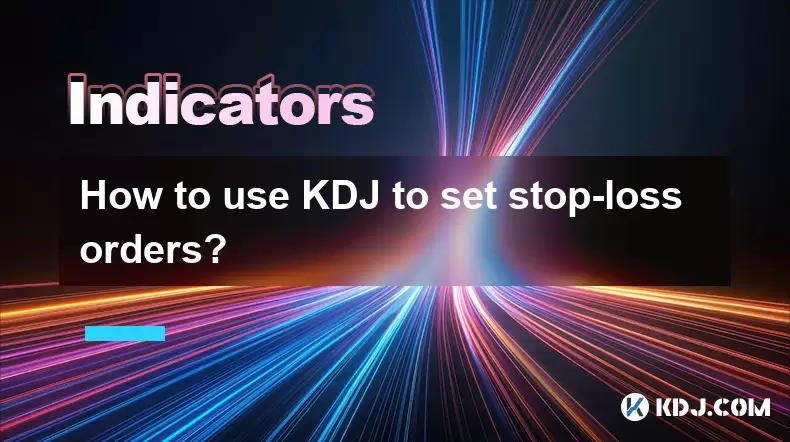
How to use KDJ to set stop-loss orders?
Aug 01,2025 at 04:28pm
Understanding the KDJ Indicator in Cryptocurrency TradingThe KDJ indicator is a momentum oscillator widely used in technical analysis within the crypt...
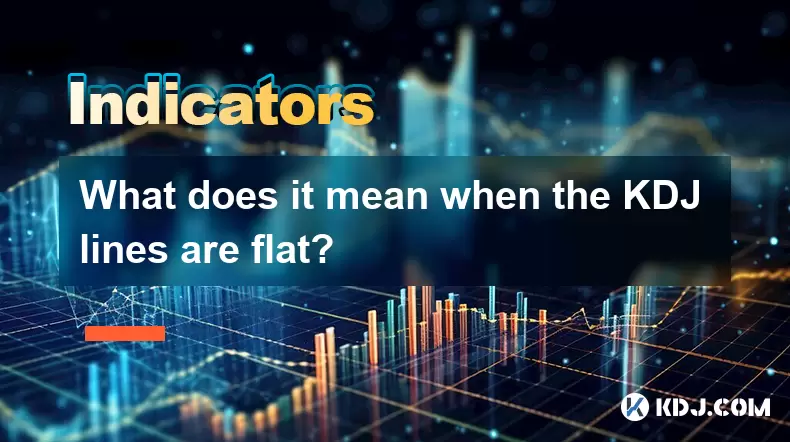
What does it mean when the KDJ lines are flat?
Aug 01,2025 at 03:22pm
Understanding the KDJ Indicator in Cryptocurrency TradingThe KDJ indicator is a momentum oscillator widely used in cryptocurrency technical analysis t...
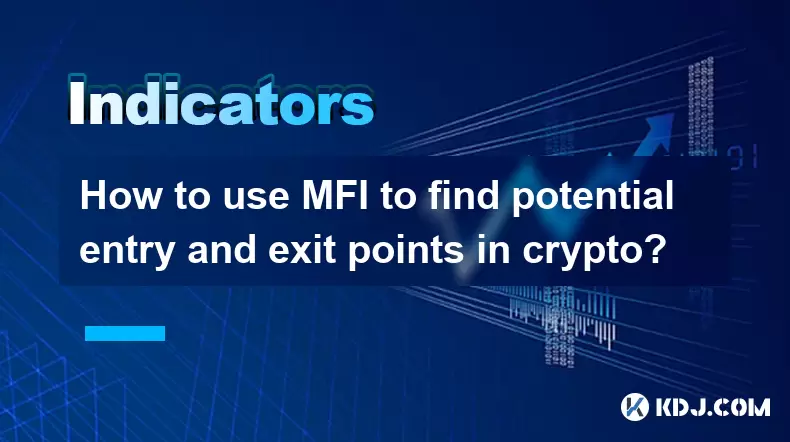
How to use MFI to find potential entry and exit points in crypto?
Aug 01,2025 at 02:35pm
Understanding the MFI Indicator in Cryptocurrency TradingThe Money Flow Index (MFI) is a momentum oscillator used to measure the strength and directio...
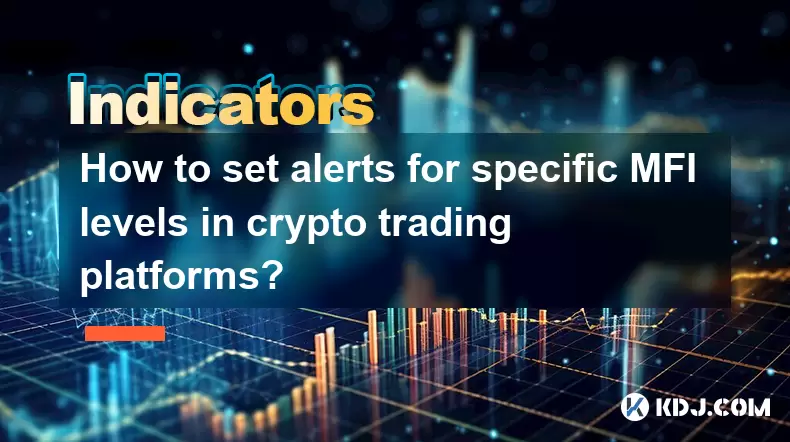
How to set alerts for specific MFI levels in crypto trading platforms?
Aug 01,2025 at 12:42pm
Understanding the Money Flow Index (MFI) in Crypto TradingThe Money Flow Index (MFI) is a momentum oscillator that measures the flow of money into and...

What is the difference in KDJ signal interpretation between a trending and a ranging market?
Aug 01,2025 at 03:56pm
Understanding the KDJ Indicator in Cryptocurrency TradingThe KDJ indicator is a momentum oscillator widely used in cryptocurrency trading to identify ...

Does the KDJ indicator work well for low-liquidity crypto assets?
Aug 01,2025 at 02:01pm
Understanding the KDJ Indicator in Cryptocurrency TradingThe KDJ indicator is a momentum oscillator derived from the Stochastic Oscillator, widely use...

How to use KDJ to set stop-loss orders?
Aug 01,2025 at 04:28pm
Understanding the KDJ Indicator in Cryptocurrency TradingThe KDJ indicator is a momentum oscillator widely used in technical analysis within the crypt...

What does it mean when the KDJ lines are flat?
Aug 01,2025 at 03:22pm
Understanding the KDJ Indicator in Cryptocurrency TradingThe KDJ indicator is a momentum oscillator widely used in cryptocurrency technical analysis t...

How to use MFI to find potential entry and exit points in crypto?
Aug 01,2025 at 02:35pm
Understanding the MFI Indicator in Cryptocurrency TradingThe Money Flow Index (MFI) is a momentum oscillator used to measure the strength and directio...

How to set alerts for specific MFI levels in crypto trading platforms?
Aug 01,2025 at 12:42pm
Understanding the Money Flow Index (MFI) in Crypto TradingThe Money Flow Index (MFI) is a momentum oscillator that measures the flow of money into and...
See all articles

























































































